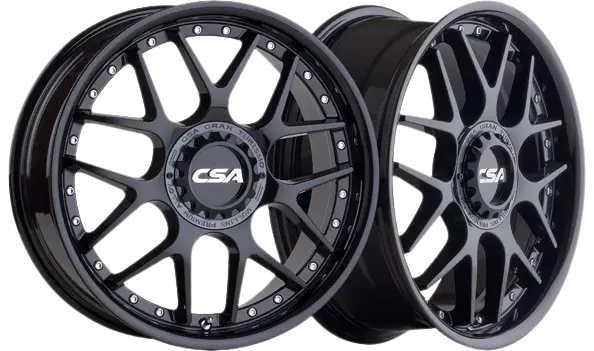Frequently Asked Questions
How can I tell what size my tyres are?
The size of a tyre is usually printed on the sidewall of the tyre. The size is represented by a series of numbers and letters, and typically looks something like this “205/55R16.”
- The first number, “205,” represents the width of the tyre in millimetres. This number is crucial in determining the tyre’s ability to handle different loads and maintain stability on the road. The width of the tyre also affects the handling characteristics of the vehicle, with wider tyres providing more stability and narrower tyres providing better manoeuvrability.
- The next number, “55,” is the aspect ratio, which represents the height of the tyre’s sidewall as a percentage of its width. A lower aspect ratio means a lower profile tyre, which provides better handling and stability, but may result in a harsher ride. A higher aspect ratio means a higher profile tyre, which provides a smoother ride but may not handle it as well.
- The “R” stands for radial construction, which is the most common type of tyre construction. Radial tyres are constructed with plies that run perpendicular to the direction of travel, providing a more stable and durable tyre.
- The next number, “16,” is the diameter of the wheel that the tyre is meant to fit on, measured in inches. This number is important because it ensures that the tyre will properly fit the wheel and provide a smooth and stable ride.
Should I determine the size of each tyre on my car?
Yes, it is important to determine the size of each tyre on your car. This is because different tyres have different specifications and performance characteristics, and it is crucial to have the correct size and type of tyre for your vehicle to ensure safe and optimal performance.
Please contact our helpful staff at (03) 9077 7505 if you have any questions.
How can I book?
For all your wheel and tyre needs, including alignment checks and rebalancing, reach out to TopGear Wheels & Tyres at (03) 9077 7505 to schedule an appointment. Or, come visit us at 619 Waterdale Rd, Heidelberg West VIC 3081 for expert advice on the best options for your vehicle.
When do I make a payment?
To schedule a tyre fitting appointment, you can either give us a call at (03) 9077 7505 and provide our staff with the size of your tyres, or you can submit an online enquiry through our form. Our team will then arrange a time and location that works for you. One of our friendly customer service representatives will contact you to confirm the details.
Are there any hidden fees?
During the booking process, we will provide you with a quote for the total cost, including GST. This quote can also be sent to you via email or SMS for your convenience. Please note that there are no additional or hidden fees.
In how much time will my tyres be changed?
Fitting four tyres on a vehicle is a task that typically takes about one hour to complete. This process includes removing the old tyres, installing the new ones, and properly inflating and balancing the new tyres. The exact time it takes to fit four tyres may vary depending on the type of vehicle and the complexity of the task, but it generally takes around one hour.
How much room is necessary around the vehicle for the tyres to fit?
When it comes to fitting tyres, the most important factor is the ability to access the vehicle’s wheels. As long as there is enough room on each side of the vehicle to open the doors and enter the vehicle, it should be possible to complete the tyre fitting.
This means that the vehicle can be parked in a standard parking spot or garage, as long as the technician has access to the vehicle’s tyres. The technician will also need enough space to move around the vehicle and safely access all four tyres to remove and install the new ones.
How are the used tyres disposed of?
When we remove tyres for replacement, they are typically recycled. The majority of these tyres are shredded into small rubber granules, which have a wide range of uses. These granules can be used in playground surfaces, insulation for floors, tile adhesives, road bases, and even in the production of new tyres.
By recycling old tyres in this way, we not only help to reduce the amount of waste in landfills but also contribute to the creation of new sustainable products.
What happens if I arrive late for my appointment?
Give us a call and we’ll be pleased to reschedule another appointment if you arrive late for your scheduled appointment.
What are your business hours?
Monday – 8.00 AM – 5.30 PM
Tuesday – 8.00 AM – 5.30 PM
Wednesday – 8.00 AM – 5.30 PM
Thursday – 8.00 AM – 5.30 PM
Friday – 8.00 AM – 5.30 PM
Saturday – 8.30 AM – 2.30 PM
Sunday – Closed
How much do vehicle tyres cost?
The brand and size of the tyre, as well as the type of vehicle you drive, all have a significant impact on the price of car tyres. Call us today to discuss your tyre needs.
What is the price of 4 brand-new automobile tyres?
The brand, size, and kind of car tyre you purchase will all have a significant impact on the price. Please call us to discuss your tyre needs as TopGear Wheels & Tyres regularly offers exceptional discounts on the purchase of tyres.
Are there discounts available if you purchase multiple tyres?
Please get in touch with TopGear Wheels & Tyres to discuss our current tyre specials.
What happens if I purchase the incorrect size tyre?
Call us as soon as you can if you ordered the wrong size of the tyre so we can arrange for the correct size for you if you did.
Does the cost of the tyres include installation?
Yes, the costs we offer include on-site fitting, computerised balancing, new valves and weights, as well as recycling your old tyres.
What is the price of a tyre fitting?
Call us at (03) 9077 7505 if you’d like additional information about this service.
How can I schedule an appointment for a tyre fitting?
Call us at (03) 9077 7505 if you’d like additional information about this service.
How much time is spent on a fitting?
Fitting four tyres on a vehicle is a task that typically takes about one hour to complete. This process includes removing the old tyres, installing the new ones, and properly inflating and balancing the new tyres. The exact time it takes to fit four tyres may vary depending on the type of vehicle and the complexity of the task, but it generally takes around one hour.
Does tyre installation require a flat area for my car?
Your car should ideally be on a flat surface so that the tyre fitting can be done as easily as possible.
How can you determine when a car tyre is punctured?
There are several signs that can indicate that a car tyre is punctured. These include
- Low tyre pressure – A puncture in the tyre can cause a slow leak of air, resulting in a decrease in tyre pressure. This can be noticed by a warning light on the dashboard or by regularly checking the tyre pressure with a tyre gauge.
- Uneven wear – A puncture in the tyre can cause uneven wear on the tread, which can be noticed by an irregular pattern of wear on the tyre.
- Visible puncture – A visible puncture, such as a nail or other sharp object stuck in the tyre, can be seen.
- Pulling or vibration – A puncture can cause the vehicle to pull to one side or to vibrate, making the ride uncomfortable.
- Bulging of the sidewall – a puncture in the sidewall of the tyre can cause a bulge in the sidewall, this can be dangerous as the tyre may fail at any moment.
Can I drive on a flat tyre for how far?
It is not recommended to drive on a flat tyre for any distance. A flat tyre can cause damage to the tyre and the vehicle, and it can also be dangerous to drive on. A flat tyre can cause the vehicle to pull to one side or to vibrate, making it difficult to control the vehicle. Additionally, driving on a flat tyre can cause damage to the rim and the suspension components, which can be costly to repair.
If you have a flat tyre, it’s important to stop the vehicle as soon as possible and change the tyre or call (03) 9077 7505 for assistance.
Are you able to rotate your tyres?
Yes, an individual can rotate their tyres, but it can be a challenging task. It requires having a proper hydraulic floor jack and some mechanical knowledge. If you decide to rotate your tyres, you can find many online guides that can provide instructions on how to do it. However, if you are not comfortable with the process, you can always contact TopGear Wheels & Tyres at (03) 9077 7505 for assistance and we will be happy to rotate them for you.
How frequently should you rotate your tyres?
The frequency of tyre rotation depends on the type of vehicle you drive and the type of tyres you have. It is typically recommended to rotate your tyres every 6,000 to 8,000 miles or every 6 to 12 months, whichever comes first.
Front-wheel drive vehicles tend to wear the front tyres more quickly than the rear tyres, so they typically require more frequent tyre rotations. Rear-wheel drive vehicles and all-wheel drive vehicles tend to wear the tyres more evenly, so they typically require less frequent tyre rotations.
Asymmetrical tyres—can they be rotated?
Yes, asymmetrical tyres can be rotated, but it is important to follow the correct rotation pattern to ensure that the tyres wear evenly. For asymmetrical tyres, it is recommended to only rotate the tyres from the same side of the vehicle. For example, the front driver’s-side tyre should only be rotated with the back driver’s-side tyre. It’s important to follow the rotation pattern recommended by the vehicle’s manufacturer or professional mechanic, as deviating from it can cause uneven tyre wear and can potentially lead to a blowout or tyre failure.
What type of tyre rotation pattern is ideal?
The optimal method for tyre rotation will vary depending on the type of vehicle you have. For 4WDs, all-wheel drives, and rear-wheel drives, the rearward cross pattern is commonly used, where the rear tyres are moved to the front of the vehicle (while staying on the same side) and the front tyres change sides and are moved to the back.
For front-wheel drive vehicles, there are two options: the X-pattern, where the front tyres change sides and are moved to the back and the rear tyres change sides and are moved to the front. And the forward-cross pattern, where the front tyres are moved to the back of the vehicle (while staying on the same side) and the rear tyres change sides and are moved to the front.
It’s important to consult the vehicle’s owner manual or consult with a professional mechanic to determine the recommended rotation pattern for your specific make and model of vehicle.
How can I make a call for an urgent tyre repair?
Call TopGear Wheels & Tyres at (03) 9077 7505 at any time.
How long before you arrive at my location?
We provide services throughout Melbourne and its neighbouring suburbs, including Preston, Thornbury, Northcote, and Rosanna.
How frequently should tyre pressure be checked?
Every few weeks, you should check the pressure in your car’s tyres to make sure they’re operating at their best pressure.
How do I check the pressure in my tyres?
Many gas stations feature air pumps that you may use to check your tyre pressure while also inflating your tyres. Additionally, you can purchase portable pressure-checking tools that you can use at any time. The recommended tyre pressure should always be checked with the manufacturer.
How can I know whether the tyres on my car need to be replaced?
Modern tyres have built-in tread wear indicators that can be used to determine when the tyre needs to be replaced. As the tyre is used, the rubber wears down and the tread depth decreases. When the level of the tread is the same as the indicator, it’s time to replace the tyre. Additionally, if you notice any damage on the sidewall or tread of the tyre, or if the car loses grip on the road, it’s a sign that the tyre needs to be replaced.
What pressure should I put on my car's tyres?
The recommended air pressure for your car tyres can be found in several places. The most common place to find the recommended air pressure is in the vehicle’s owner’s manual. The recommended air pressure is also often listed on the driver’s side door jamb or on the fuel filler door.
It’s important to note that the recommended air pressure may vary depending on the type of vehicle, the type of tyre, and the load the vehicle is carrying. It’s important to consult the vehicle’s owner’s manual or consult with a professional mechanic to determine the recommended tyre pressure for your specific make and model of vehicle.


